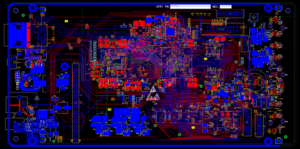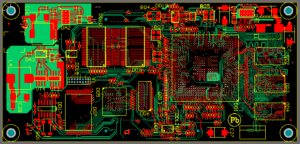Digital PCB Circuit Board Design
The Digital PCB Circuit Board Design has three aspects that deserve to be taken seriously:
(1) The digital signal itself is a broad-spectrum signal. According to the Fourier function, the high-frequency components are very rich, so the digital IC is designed with full consideration of the high-frequency components of the digital signal. However, in addition to the digital IC, the signal transition area inside and between the various functional links, if arbitrarily, will lead to a series of problems. Especially in circuit applications where digital and analog and high frequency circuits are mixed in the process of PCB Board design.

Digital PCB Circuit Board Design
(2) Various types of Digital PCB Circuit Board design applications are related to the reliability requirements of the circuit in practical applications and product engineering requirements. It is not possible to attach various high-cost “guarantees” to circuits that can meet the requirements with conventional PCB reverse engineering/design section.
(3) The working speed of digital circuits is moving toward high frequency in an unprecedented way (for example, the current CPU has a frequency of up to 1.7 GHz and far exceeds the lower limit of the microwave band). Although the reliability guarantee functions of the related devices are also synchronized, they are based on the internal components of the device and typical external signal characteristics.


